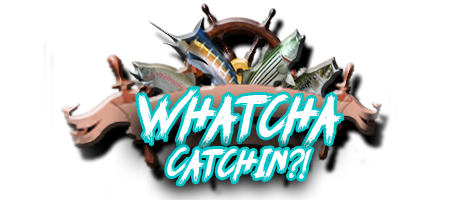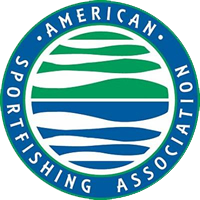SPRINGFIELD, Va., – The recreational boat owner’s advocacy, services and safety group, Boat Owners Association of The United States (BoatUS), has more than 800,000 members about to return to the nation’s waterways for boating season. But, before they get there, they will need to follow the timeless rite of spring commissioning. To help boaters simplify this task – and ensure a summer of fun and safe boating and less chance for breakdowns – BoatUS offers help for all types of boat owners with its annual Spring Commissioning Checklist.
A printer-friendly PDF copy of the checklist is available to download and take to the boat. Be sure to follow all manufacturer recommendations for your specific boat, engine and accessories.
Before You Launch
- Check the condition of antifouling paint and repaint if necessary.
- Inspect all hose clamps for rust and replace as necessary. Double clamp fuel lines and exhaust hoses with marine-rated stainless-steel hose clamps. While not technically required, it’s wise to double clamp whenever possible on all hoses — especially those below the waterline.
- Inspect all hoses for stiffness, rot, leaks and cracking, and replace any that are faulty. Make sure they fit snugly.
- Inspect prop(s) for dings, pitting and distortion. Make sure cotter pins are secure.
- Grip the prop (on inboard drive systems) and try moving the shaft up and down and side to side. If it’s loose and can be wiggled, the cutless bearing may need to be replaced.
- Check the rudderstock to ensure it hasn’t been bent. Operate the wheel or tiller to ensure the steering works correctly. Check the rudder bearing and steering cable for unusual play or movement.
- Inspect the hull for blisters, distortions and stress cracks.
- Make sure your engine intake sea strainer (if equipped) is not cracked or bent from ice and is free of corrosion, clean and properly secured.
- With inboards, check the engine shaft and rudder stuffing boxes for correct adjustment. A stuffing box should leak no more than two or three drops each minute when the prop shaft is turning. Check the shaft log hose for deterioration and rusty hose clamps.
- Inspect, lubricate and exercise thru-hull valves. It’s a good idea to tie a right-sized wooden bung to the valve in case of failure.
- Use a garden hose to check for deck leaks at ports and hatches. Renew caulk or gaskets as necessary.
- Inspect and test the bilge pump and float switch to ensure they’re both working properly. Also inspect the pump’s hose.
- Check stove and remote LPG tanks for loose fittings, leaking hoses and properly functioning shutoff systems. Use the pressure gauge to conduct a leak down test to check for system leaks.
- Inspect dock and anchor lines for chafe and wear.
- If equipped, ensure that the stern drain plug is installed.
- After the boat is launched, be sure to check all thru-hulls for leaks.
Engines and Fuel Systems
- Inspect fuel lines, including fuel tank fill and vent hoses, for softness, brittleness or cracking. Check all joints for leaks, and make sure all lines are well supported with noncombustible clips or straps with smooth edges.
- Inspect fuel tanks, fuel pumps and filters for leaks. Ensure portable tanks and lines are completely drained of stale fuel before filling with fresh fuel. Clean or replace fuel filters and/or fuel-water separators if not done before winterization.
- Every few years, remove and inspect exhaust manifolds and risers for corrosion (for inboard-powered and inboard/outboard boats).
- Charge battery.
- Clean and tighten electrical connections, especially both ends of battery cables. Use a wire brush to clean battery terminals, and top off cells with distilled water (if applicable).
- Inspect the bilge ventilation intake and blower ducting for damage or leaks and run the blower to confirm correct operation.
- Test engine warnings and alarms.
Engine Outdrives and Outboards
- Inspect rubber outdrive bellows for cracked, dried and/or deteriorated spots (look especially in the folds) and replace if suspect.
- Check power steering and power trim oil levels.
- Replace anodes/zincs that are more than half wasted.
- Inspect the outer jacket of control cables. Cracks or swelling indicate corrosion and mean that the cable must be replaced.
- Inspect lower unit oil level and top off as necessary.
Sailboat Rigging
- Inspect swage fittings for cracks and heavy rust (some discoloration is acceptable). Inspect wire halyards and running backstays for “fishhooks” and rust.
- Remove tape on turnbuckles and lubricate threads, preferably with Teflon. Replace old tape with fresh tape, and ensure that water is able to freely drain from it.
- If you suspect the core around a chainplate is damp, remove the chainplate to inspect and make repairs.
- Inspect masthead sheaves and all blocks to make sure they’re running freely.
Trailers
- Inspect tire treads and sidewalls for cracks or lack of tread and replace as necessary. Check air pressure; don’t forget the spare.
- Inspect wheel bearings and repack as necessary.
- Test all lights and replace any broken bulbs or lenses.
- Inspect winch to make sure it’s working properly. Inspect hitch chains.
- Inspect trailer frame and axle(s) for rust. Sand and paint to prevent further deterioration.
- Inspect brakes and brake fluid reservoir.
Safety
- A law that went into effect in 2021 requires a vessel operator to use either a helm or outboard lanyard or wireless engine cutoff switch on certain vessels less than 26 feet when traveling on plane or above displacement speed, so be sure your switch is working properly and the lanyard is in serviceable condition. If you use a wireless cutoff switch, ensure batteries in the fobs and wrist worn devices are refreshed.
- Check dates on pyrotechnic flares, which expire 42 months after manufacture.
- Inspect fire extinguishers. A regulation that went into effect last year requires a 12-year expiration for disposables and has different carriage requirements for older and newer model year vessels.
- Ensure you have properly sized and wearable life jackets in good condition for each passenger, including kids. Check inflatable life jacket cylinders and dissolvable “pill” bobbins in auto-inflating models.
- Test smoke, carbon monoxide, fume and bilge alarms.
- Check running lights for operation and spare bulb inventory.
- Update chartplotter software.
- Replenish first-aid kit items that may have been used last season or are expired.
- Check the operation of VHF radio(s) and that the MMSI number is correctly programmed in. (BoatUS members can obtain a free MMSI number at BoatUS.com/MMSI.)
- Get a free vessel safety check from the U.S. Coast Guard Auxiliary or U.S. Power Squadrons. Find out more at cgaux.org/vsc.
For the Dock
- In addition to checking its entire length for wear or abrasions, check both ends of the shore power cable connections as well as the shore power receptacle on the boat for burns, which indicate the cable and/or boat’s shore power inlet or the dock’s receptacle must be replaced.
- Test ground-fault protection on your boat and private dock, and know how to prevent Electric Shock Drowning.
The Paperwork
- Make sure your boat registration is up to date – and dinghy if you have one. Don’t forget your boat trailer tags.
- Review your boat insurance policy and update coverage if needed. Get a free quote at BoatUS.com/Insurance. Provide a copy to your marina or club.
- Ensure your BoatUS membership is in good standing, and check your TowBoatUS coverage by logging into BoatUS.com/Account, or join at BoatUS.com/Membership.
- Download the free BoatUS App to make it easy to summon on-water assistance and speed response times as well to check tide tables, weather, and partner discounts.
About Boat Owners Association of The United States (BoatUS)
Celebrating more than 55 years, BoatUS is the nation’s largest advocacy, services and safety group with more than 800,000 dues-paying members. BoatUS is the boat owners’ voice on Capitol Hill, fighting for their rights. The TowBoatUS® fleet is available 24/7 to assist our members on the water when boats break down or run aground with some 600 vessels and 300-plus locations across North America, bringing our members safely back to the launch ramp, marina or dock. On the road, we are The Boat Owners Auto Club™, helping ensure roadside trailer and tow vehicle breakdowns won’t slow you down. BoatUS offers GEICO boat insurance policies that give boat owners affordable, specialized coverage and the superior service they need. Award-winning BoatUS Magazine is the largest circulation recreational marine publication in the U.S. with engaging content that speaks to the passion for boat ownership, while our 501(c)(3) nonprofit BoatUS Foundation for Boating Safety and Clean Water offers the nation’s only free online boating safety course and many other programs that keep boaters safe and our waters clean. Visit BoatUS.com.










